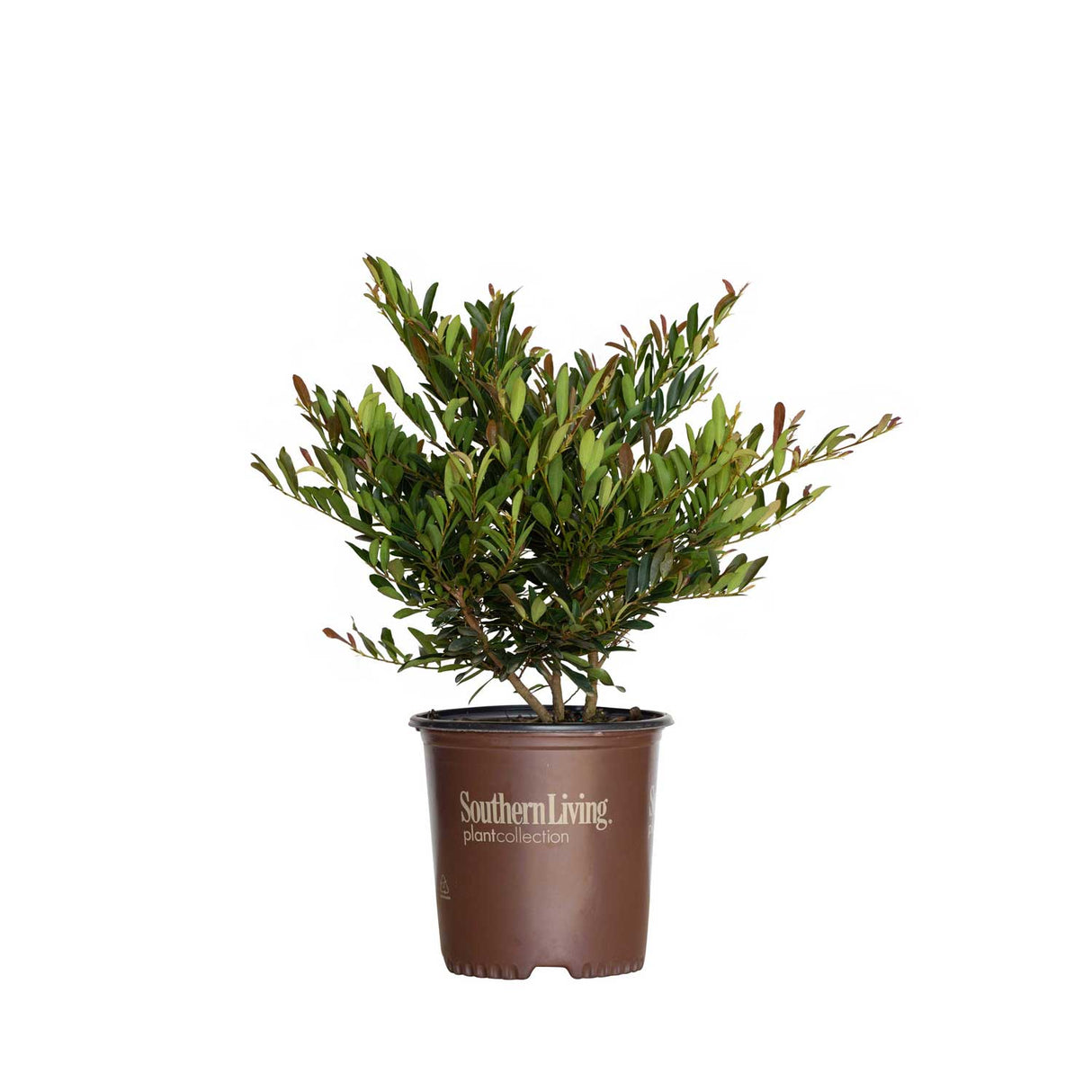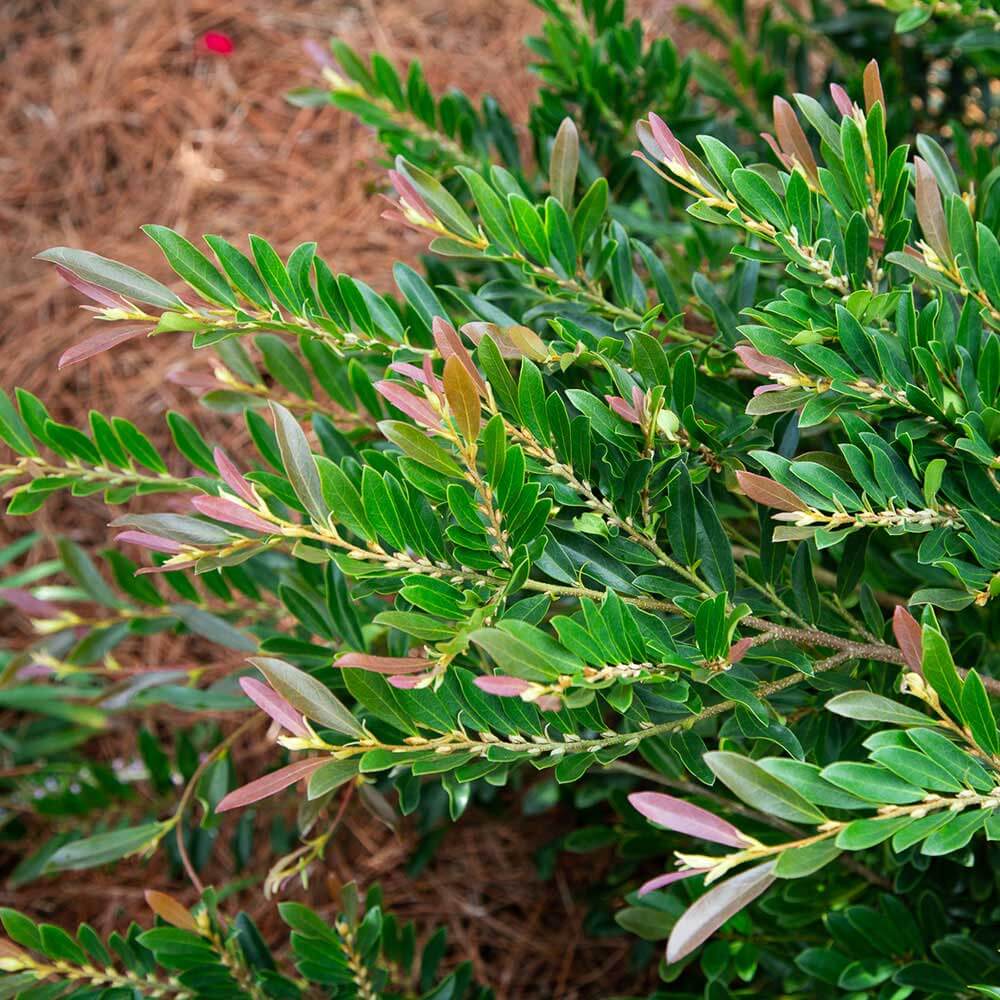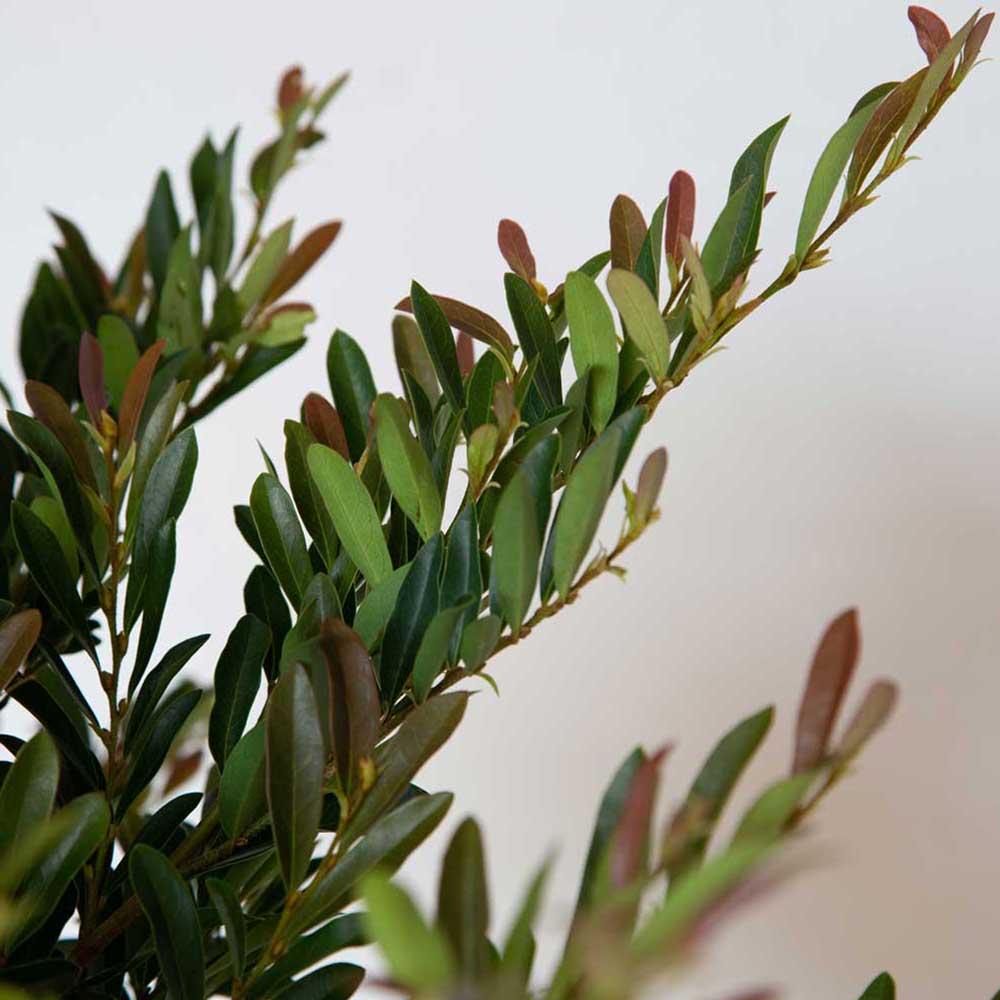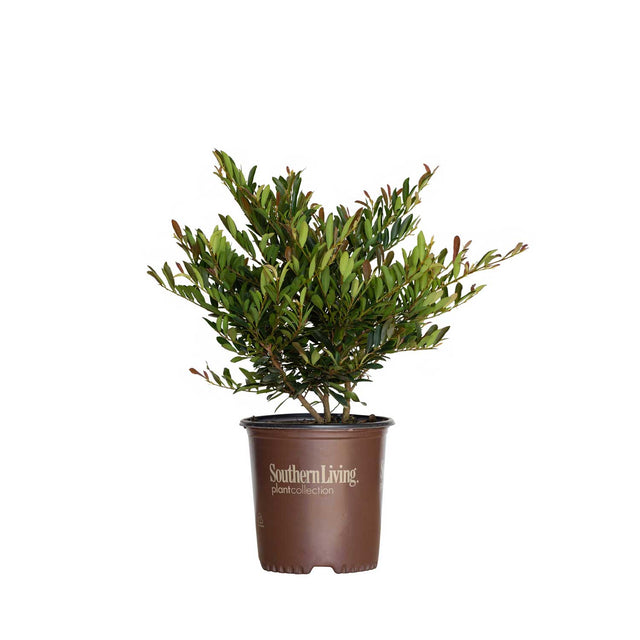Cast in Bronze Distylium
Cast in Bronze Distylium - 2 Gallon is backordered and will ship as soon as it is back in stock.
Description
Description
Cast in Bronze Distylium from the Southern Living Plant Collection is an upright, rounded evergreen that is perfect for a medium-sized hedge or screen. Its glossy foliage starts as a bronze or maroon color that matures to a shiny dark green, hence the name, Cast in Bronze.
Its moderate to fast growth rate makes it ideal to fill in spaces quickly with glossy textures and warm hues. This Distylium matures to 3 ft. to 4 ft. tall x 3 ft. to 4 ft. W, making it great for mass plantings, textural fills or mixed beds. Use it in place of traditional boxwoods or dwarf hollies to give your landscape a warm color contrast.
Caring For Cast In Bronze Distylium Shrubs
Hardy in USDA Zones 7-9
Water regularly until well-established, traditionally around 3 months. Afterward, supplemental watering may be required a couple of times a week. During the second growing season, watering your new shrub once a week during dry weather should be sufficient.
Well-draining soil is essential as Distylium can be prone to root rot in poorly-draining soil.
Fertilize the Cast in Bronze in spring with a slow-release fertilizer to ensure it stays happy and healthy throughout the year.
Care & Use
Care & Use
Spacing Recommendations
Spacing Recommendations
-
Scientific Name
-
Hardiness Zone7, 8, 9
-
Sun ExposureFull Sun to Part Shade
-
Evergreen or DeciduousEvergreen
-
FeaturesDisease Tolerant, Drought Tolerant, Dwarf, Flowering, Winter / Fall Foliage Color
-
Feature ColorGreen, Red
-
UsesAccent, Foundation Planting, Hedge
-
Water NeedsMedium
-
Bloom SeasonSpring
Growing Zones : 7, 8, and 9

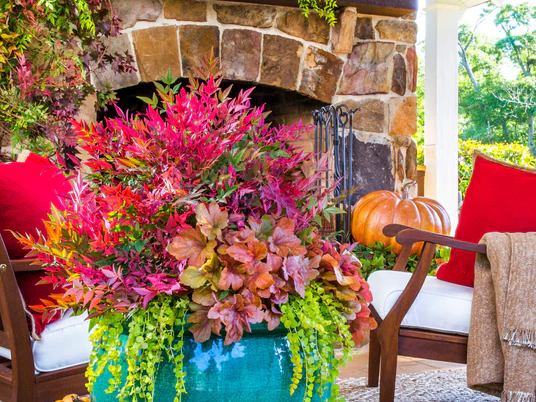
Southern Living Plants
